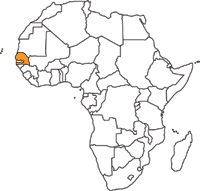Protected Areas in Senegal
The first national park was created in 1925 whilst the country was under French colonial rule.
The Forest Code (regulations) defines classified forests, reforestation or restoration areas, national parks, strict nature reserves and special reserves, and provides, amongst other things, for the classification and declassification of classified forests, and for the administration of protected areas.
In 1987, Senegal became the first African country to accede to the Convention on the Conservation of European Wildlife and Natural Habitats (Bern Convention), which is of particular importance to migratory birds.
The National Parks Service, incorporated within the National Parks Directorate, is primarily responsible for the protection of wildlife within national parks. It functions in a similar manner to a paramilitary organisation, with a hierarchy of personnel, including well-trained, armed guards.
The ivory trade was prohibited in 1982, and poaching has been taken very seriously.
Protection and management of existing protected areas is generally good, and Senegalese parks are now amongst the most heavily guarded in the world.
Definitions:
*Parc national (National park): Area where hunting, capturing animals or exploitation of flora, soil or subsoil is total prohibited. Where possible, public access for educational or recreational purposes is permitted.
*Réserve spéciale (Special reserve): Areas in which partial or total, temporary or permanent restrictions may be necessary in certain circumstances (scientific, touristic, or climatic).
*Forêt classée (Classified forest): Area of bamboo, forage trees, palms and other vegetation exploited for various products e.g. wood and fruit, but not agricultural produce.
Source: UNEP-WCMC, Ministère de l'Environnement et de la Protection de la Nature
|


